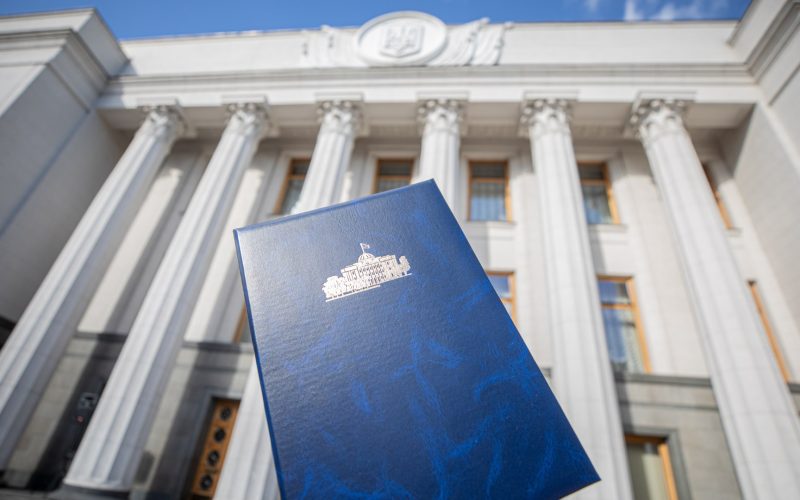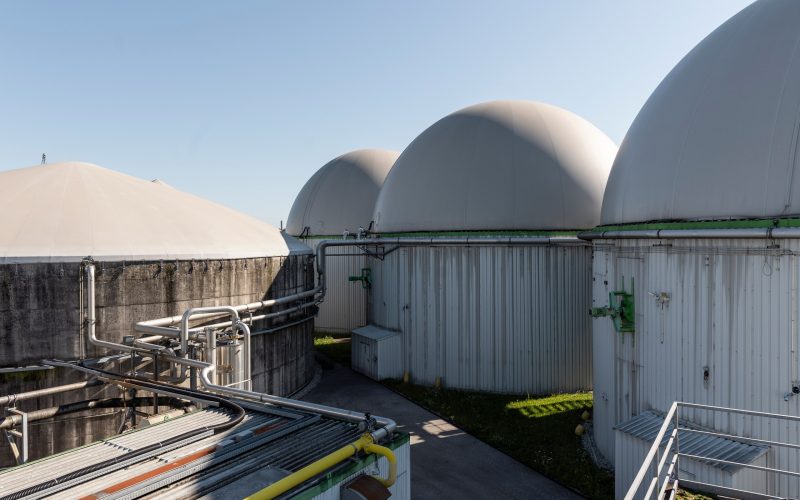Estimating possible benchmark values CBAM
To calculate the financial obligations of importers in the EU within the framework of the Carbon Border Adjustment Mechanism(CBAM), a key element is the value of the benchmarks.
These values determine what proportion of specific greenhouse gas (GHG) emissions will be covered by free allocation between 2026 and 2034. This, in turn, determines what proportion of the embedded CO₂ emissions importers must cover with CBAM certificates and how much the cost of import into the EU will increase.
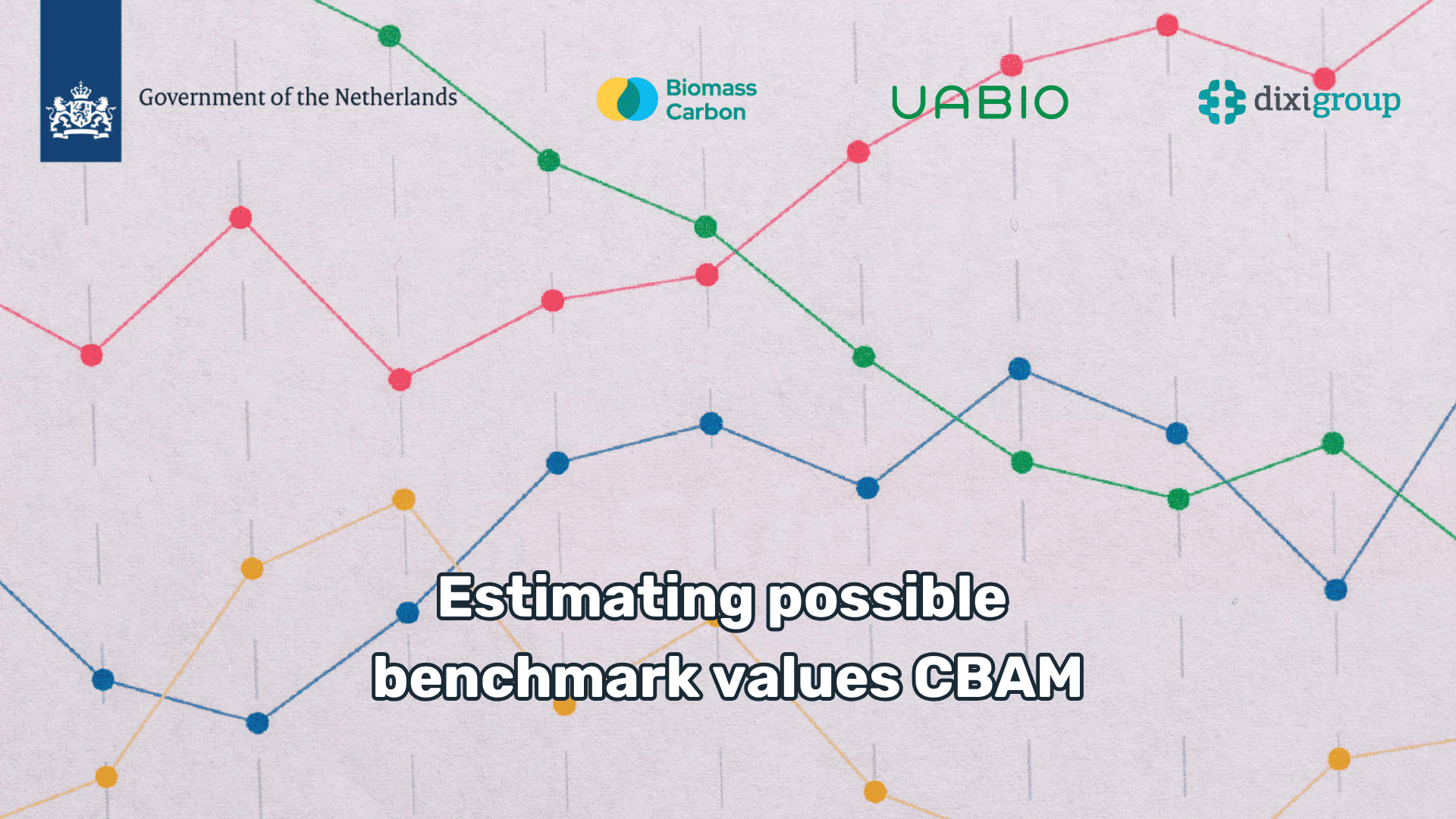
The role of benchmarks during the CBAM definitive period
The impact of the benchmarks will be particularly significant in the first year of the definitive period of the CBAM, in 2026, when the cancellation of free allowances from the EU Emissions Trading System (EU ETS) will be 2.5% and the CBAM factor will be 97.5%. Thereafter, taking into account the gradual reduction of the CBAM factor, the impact of the CBAM benchmarks (and, consequently, the specific emissions covered by free allocation) on the amount of specific embedded emissions that will have to be paid for will decrease to zero in 2034. Then, certificates will have to be purchased for the total number of embedded emissions.
A detailed description of the components of the formula for calculating the number of CBAM certificates (which authorised declarants will have to surrender for emissions embedded in imported goods) is presented in the publication:
Calculation of obligations for surrender of CBAM certificates for imported goods in the EU
The formula below illustrates this calculation:

The industry is pushing for the European Commission to publish these values. However, as of today, with less than three months left until the start of the CBAM definitive period, this has not yet been done.
Benchmark models by CBAMBOO
Technical Note introducing the benchmark model was published on the CBAMBOO platform. Let us consider the approaches that, according to this report, will be used to determine these benchmarks:
- Benchmark values will be based on benchmarks the EU ETS for free allocation of emission allowances for the period 2026-2030 are currently being updated. This means that the final values will not be available until the first half of 2026.
- The EU ETS benchmarks are based on the 10% most efficient installations in the EU and are applied to production processes. Benchmarks CBAM, instead, will apply to products.
- There may be one benchmark value for one commodity code (CN), or one benchmark value will apply to several commodity codes (for similar production processes). Alternatively, one commodity code may have more than one benchmark value (for example, in the case of primary and secondary steel products).
In the absence of clear information on the benchmark values from the European Commission, CBAMBOO experts observe significant differences in the intermediate benchmark values adopted by different market participants and even different regulators.
One conservative approach has been to apply the current EU ETS benchmark value to products in the equivalent aggregate category where possible. This leads to a benchmark for iron and steel of 0.215 t CO2/t, based on the equivalent ETS value for carbon steel produced in electric arc furnaces (EAF). However, other approaches exist with significantly higher values. In particular, the French National Competent Authority (NCA) recently published a calculator that set the benchmark for iron and steel products at 2.15 t CO2/t.
Consider an example: importing steel fasteners into the EU. If the embedded emissions are 2.5 t CO₂ per tonne of product, the cost of a CBAM certificate is €75/t CO₂, and the producer does not pay for the emissions, then in 2026 the importer will pay between €30 and €172 per tonne of product for the certificates. This wide range (which is due to the benchmark range of 0.215 to 2.15) makes import decisions very difficult.
CBAMBOO model, designed for benchmark evaluation, CBAM narrows this range and is based on three documents:
- EU ETS benchmarks for 2021–2025;
- Report of the Joint Research Centre (JRC) of the European Commission for 2023 “Greenhouse gas emission intensities of the steel, fertilisers, aluminium and cement industries in the EU and its main trading partners”, which estimates the average emission factors for each commodity code in the CBAM list for the EU’s main trading partners;
- Guidance Document No. 2 on the harmonised free allocation methodology for the EU ETS – 2024 Revision, which attempts to map benchmark values to CBAM commodity codes.
Calculations
For each CBAM sector, efficiency factor values were calculated based on EU ETS benchmark data. This factor measures the percentage difference of the 2021-2025 benchmark (BM) relative to the average emission factor (EF) for all installations involved in the production processes within that sector. The results of the assessment are presented in the table below:
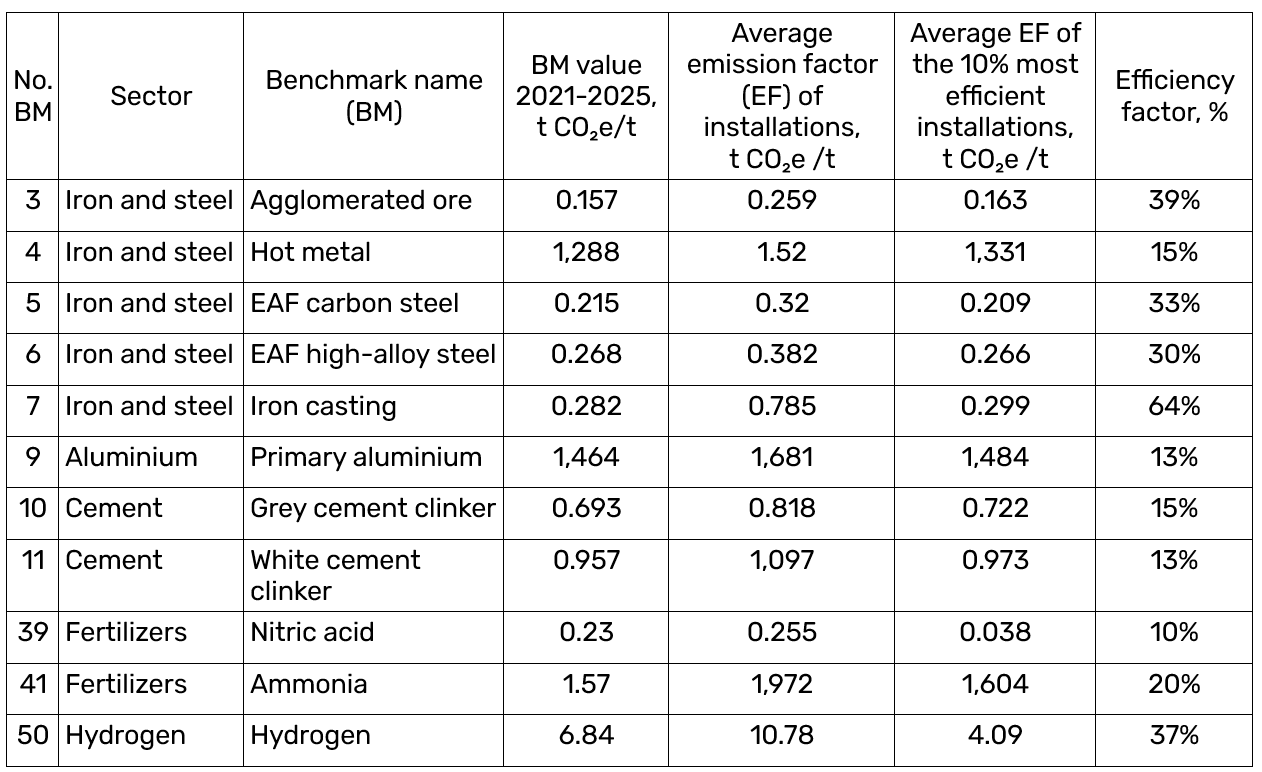
Then, from the values of the individual product efficiency factors, the minimum, average, and maximum efficiency factors for each CBAM sector were calculated.

These efficiency factors are then applied to the default emission factor values for the EU-27 from the JRC report. The results of CBAMBOO calculations for the lower, middle and higher benchmark values for individual product types are presented in the table:
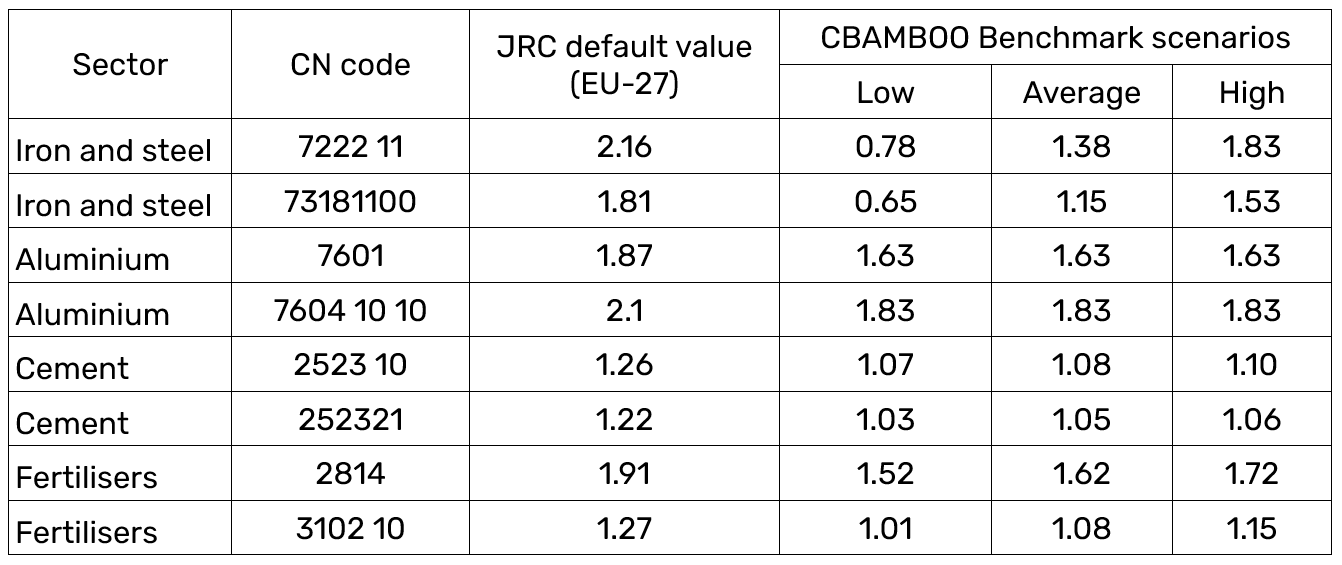
It should be noted that the resulting benchmark values do not take into account differences in production methods. Using a similar approach, indicative benchmarks can be calculated for goods with other CN codes.
In general, the proposed CBAMBOO approach can be used to estimate the financial obligations of importers under CBAM from the beginning of the definitive period in 2026. These costs will determine the final cost of imports and, accordingly, will influence the choice of supplier. Ukrainian manufacturers need to take this factor into account to maintain their positions in the EU market.
It should be noted that this estimate is indicative and can be used only until the European Commission publishes the official CBAM benchmark values.
The publication was prepared within the framework of the project “Technical Assistance for CBAM good exports from UA to EU“, which is implemented with the support of the Ministry of Foreign Affairs of the Kingdom of the Netherlands and the Netherlands Enterprise Agency. Funding is provided by the Private Sector Development Program of the Netherlands Enterprise Agency/The Netherlands Enterprise Agency.
The project “Technical Assistance for CBAM good exports from UA to EU” began on November 25, 2024, and will last until February 28, 2026. This project is implemented with the support of the Ministry of Foreign Affairs of the Kingdom of the Netherlands and the Netherlands Enterprise Agency.
